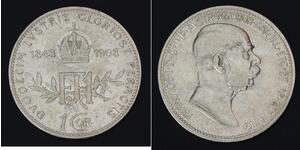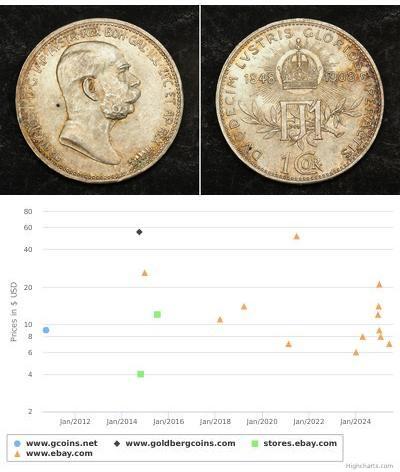1 Gold Shield
1425-1428, Holland, Phiilp III "the Good". Gold Chaise D'or Coin. PCGS AU-53!
State: Holland (County)
Mint Period: 1425-1428
Reference: Friedberg 119, Deomonte 738.
Denomination: Gold Chaise D'or (Gold Shield)
Condition: Certified and graded by PCGS as AU-53!
Diameter: 29mm
Weight: 3.42gm
Material: Gold!
Obverse: Crowned figure of king on a gothic throne with sceptre in his right hand and his left resting on shield with arms.
Legend: + PhSx DV[Xx BV]RG - xCOm'x - FLADx HESx hOL' Z,
Translated: "Philip, Duke of Burgundy, Count of Flanders and heir to Holland and Zeeland."
Reverse: Floreate cross in quadrilobe with trefoils in the quarters.
Legend: + XPC: VINCIT: XPC: REGNAT: XPC: INPERAT
Translated: "Christ conquers, Christ reigns, Christ commands."
The County of Holland was a state of the Holy Roman Empire and from 1433 part of the Burgundian Netherlands, from 1482 part of the Habsburg Netherlands and from 1581 onward the leading province of the Dutch Republic, of which it remained a part until the Batavian Revolution in 1795. The territory of the County of Holland corresponds roughly with the current provinces of North Holland and South Holland in the Netherlands. The County of Holland was the first Holy Roman county in the area to reach the level of economic, cultural, military, and technological development it did, having had time to undergo this development before the area became classed as a county.
Philip III (French: Philippe le Bon; Dutch: Filips de Goede; 31 July 1396 in Dijon – 15 June 1467 in Bruges) was Duke of Burgundy from 1419 until his death. He was a member of a cadet line of the Valois dynasty, to which all 15th-century kings of France belonged. During his reign, the Burgundian State reached the apex of its prosperity and prestige, and became a leading centre of the arts.
He is known for his administrative reforms, patronage of Flemish artists such as Jan van Eyck and Franco-Flemish composers such as Gilles Binchois, and the seizure of Joan of Arc, whom Philip ransomed to the English after his soldiers captured her, resulting in her trial and eventual execution. In political affairs, he alternated between alliances with the English and the French in an attempt to improve his dynasty's powerbase. Additionally, as ruler of Flanders, Brabant, Limburg, Artois, Hainaut, Holland, Luxembourg, Zeeland, Friesland and Namur, he played an important role in the history of the Low Countries.
He was married three times, and had three legitimate sons, all from his third marriage and only one of whom reached adulthood. He had 24 documented mistresses and fathered at least 18 illegitimate children.

|
Beigetragen von:
anonymous 2023-10-30 |
|
||
|
||
|
||
|
||
1 Corona Österreich-Ungarn (1867-1918) Silber Franz Joseph I ...
Diese Gruppe hat 25 Münzen / 17 Preise
⇑

-600-300-9UchwJflKiwAAAGL3mpTnYJf.jpg)

-300-150-9UchwJflKiwAAAGL3mpTnYJf.jpg)
 English
English




-300-150-AeIKqUpY7NEAAAFhroEy54Nz.jpg)







